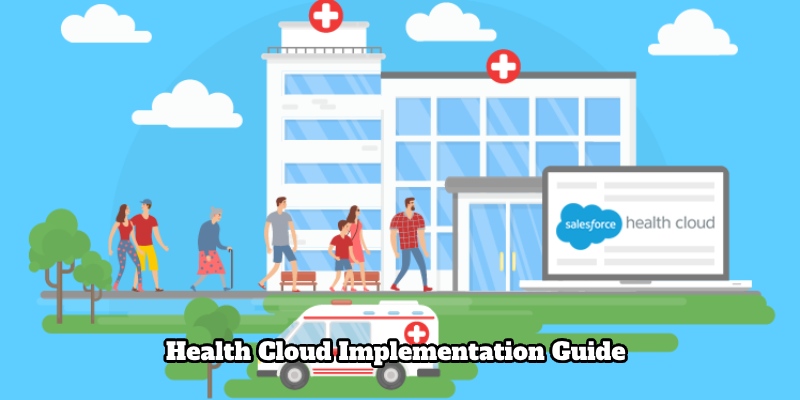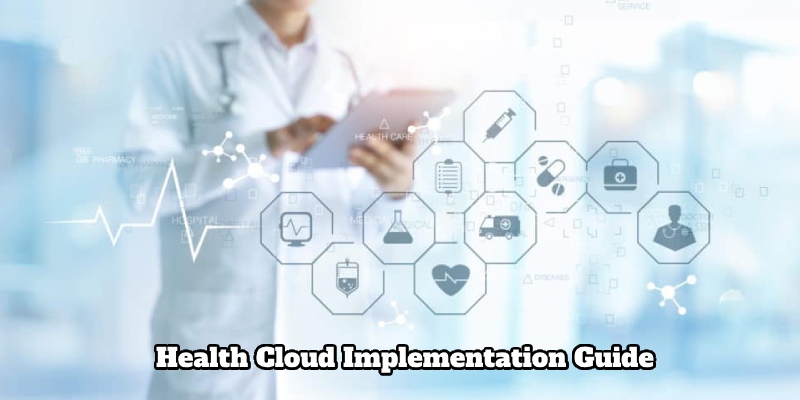Health Cloud implementation guide is becoming increasingly popular in the healthcare industry. Join us to explore the Health Cloud implementation guide – an important step forward in modernizing the healthcare industry.
What is the health cloud?
The term “Health Cloud” typically refers to a cloud computing platform or service specifically designed for the healthcare industry. It provides a secure, scalable, and flexible environment for storing, managing, and analyzing healthcare data and applications. Health Cloud solutions often incorporate features tailored to the unique needs and regulatory requirements of healthcare organizations, such as HIPAA compliance, data encryption, and interoperability with electronic health records (EHR) systems.

Key features and functionalities of a Health Cloud may include:
- Data Storage and Management: Storing and organizing various types of healthcare data, including patient records, medical images, lab results, and administrative information.
- Security and Compliance: Implementing robust security measures to protect sensitive healthcare data from unauthorized access, breaches, and cyber threats. Compliance with healthcare regulations and standards, such as the Health Insurance Portability and Accountability Act (HIPAA), is also a critical aspect.
- Interoperability: Facilitating seamless exchange and integration of healthcare data across different systems and platforms, including EHR systems, medical devices, and third-party applications.
- Analytics and Insights: Leveraging advanced analytics and artificial intelligence (AI) capabilities to derive insights from healthcare data, such as predictive analytics for patient outcomes, population health management, and personalized medicine.
- Collaboration and Communication: Enabling healthcare providers, patients, and other stakeholders to collaborate and communicate effectively through secure messaging, telemedicine, and care coordination tools.
- Scalability and Flexibility: Offering scalable infrastructure and resources to accommodate the growing needs of healthcare organizations, as well as the ability to adapt to changing requirements and technological advancements.

Health cloud implementation guide
Implementing a health cloud solution involves several steps to ensure successful deployment and integration. While the specifics can vary depending on the chosen platform (e.g., Salesforce Health Cloud, Microsoft Cloud for Healthcare, etc.), here’s a general guide to help you navigate the process:
Assessment and Planning
Identify the specific needs and objectives of your healthcare organization.
Evaluate existing systems and workflows to determine integration requirements.
Define key performance indicators (KPIs) to measure the success of the implementation.
Develop a detailed project plan outlining milestones, timelines, and responsibilities.

Vendor Selection
Research and evaluate different health cloud solutions based on your requirements.
Consider factors such as scalability, customization options, security features, compliance with healthcare regulations (e.g., HIPAA), and pricing.
Engage with vendors for demos, discussions, and obtaining quotes.
Select the vendor that best aligns with your organization’s needs and budget.
Data Migration and Integration
Identify data sources such as electronic health records (EHR), patient management systems, billing systems, etc.
Develop a data migration strategy to transfer existing data to the health cloud platform.
Ensure data integrity and compliance with regulatory requirements during the migration process.
Integrate the health cloud platform with other systems to enable seamless data exchange and interoperability.
Customization and Configuration
Customize the health cloud platform to align with your organization’s workflows and processes.
Configure user roles, permissions, and access controls to ensure data security and privacy.
Implement automation and workflow rules to streamline processes and improve efficiency.
Train users on how to effectively use the platform and its features.
Security and Compliance
Implement robust security measures to protect sensitive healthcare data.
Ensure compliance with healthcare regulations such as HIPAA, GDPR, etc.
Regularly monitor and audit access to the health cloud platform to detect and prevent security breaches.
Provide ongoing staff training on security best practices and compliance requirements.
Testing and Quality Assurance
Conduct comprehensive testing of the health cloud platform to identify and address any issues or bugs.
Test various scenarios to ensure the platform performs as expected under different conditions.
Solicit feedback from end-users and stakeholders to identify areas for improvement.
Deployment and Go-Live
Develop a deployment plan that minimizes disruption to operations.
Communicate with stakeholders about the upcoming deployment and provide training and support as needed.
Monitor the deployment process closely and address any issues promptly.
Celebrate the successful launch of the health cloud platform and continue to provide support to users.

Optimization and Continuous Improvement
Monitor key metrics and KPIs to measure the performance and impact of the health cloud platform.
Gather feedback from users and stakeholders to identify opportunities for optimization and enhancement.
Continuously refine and improve processes to maximize the value derived from the platform.
Stay updated on new features, updates, and best practices from the vendor and the healthcare industry.
In conclusion
The Health Cloud implementation guide not only provides us with a detailed guide on how to deploy a cloud computing platform in a healthcare environment but is also a means to open the door for progress and innovation. . For every healthcare organization, taking this step is not just about optimizing workflows but also about creating a flexible, safe and efficient environment for both patients and providers. service level.





